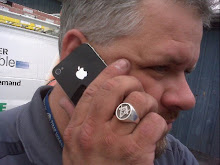Delusions of Grandeur
9 months ago
My journey in search of more light in Masonry

| Christianity | All things whatsoever ye would that men should do to you, do ye so to them; for this is the law and the prophets. Matthew 7:1 |
| Confucianism | Do not do to others what you would not like yourself. Then there will be no resentment against you, either in the family or in the state. Analects 12:2 |
| Buddhism | Hurt not others in ways that you yourself would find hurtful. Udana-Varga 5,1 |
| Hinduism | This is the sum of duty; do naught onto others what you would not have them do unto you. Mahabharata 5,1517 |
| Islam | No one of you is a believer until he desires for his brother that which he desires for himself. Sunnah |
| Judaism | What is hateful to you, do not do to your fellowman. This is the entire Law; all the rest is commentary. Talmud, Shabbat 3id |
| Taoism | Regard your neighbor’s gain as your gain, and your neighbor’s loss as your own loss. Tai Shang Kan Yin P’ien |
| Zoroastrianism | That nature alone is good which refrains from doing another whatsoever is not good for itself. Dadisten-I-dinik, 94,5 ________________________________________________________ I personally have taken a real liking to the Taoism version. "Regard your neighbor’s gain as your gain, and your neighbor’s loss as your own loss" This gets you where you need to be in regards allowing the answers / solutions to come to you and help someone in needs and or the same is true in regards to enjoying someone good fortunes. In Freemasonry, the use of the "common gavel"...... ......represents the force of conscience. It is our will power, through which we govern our actions and free ourselves from debasing influences. It requires repeated exercise of our will power to subdue our passions. Will power is common to all and it is fittingly symbolized by the "common" gavel, but just as the gavel is of no worth unless it is used, so is our will power. |